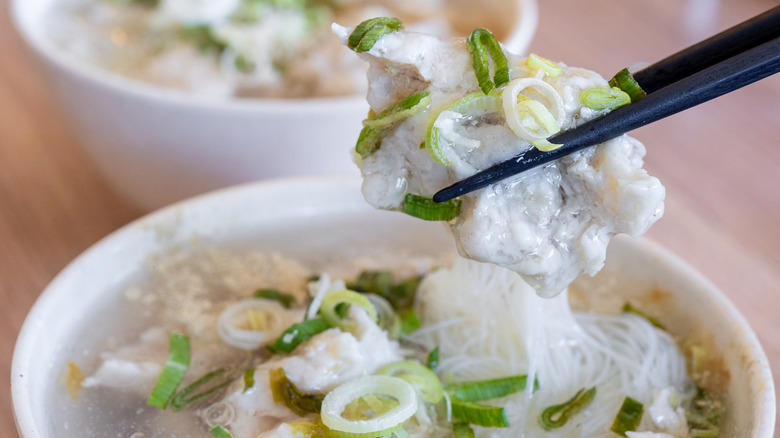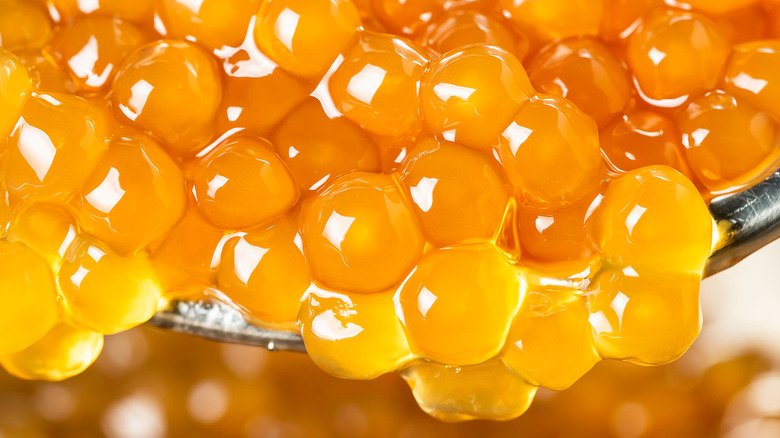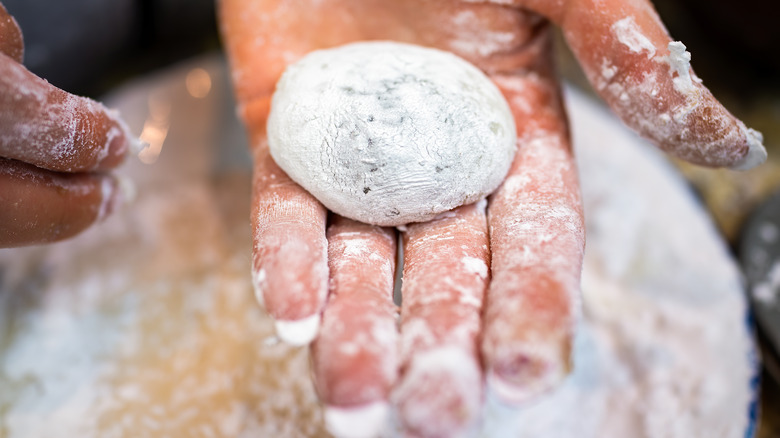'QQ': The Taiwanese Equivalent Of 'Al Dente'
Have you ever seen someone eat boba for the first time? If so, you might have witnessed a series of delightedly baffled facial expressions, followed by an effort to find the perfect word to describe the texture of the tapioca pearls swimming at the bottom of their milk tea. The boba is slimy, but in a good way. It's chewy, but it also melts in your mouth. Taiwanese Hokkien has an answer to this tactile conundrum: "QQ."
While it has no direct translation in English, QQ transcends language by way of onomatopoeia. In Taiwanese, the pronunciation of the letter "Q" rings close to the word for "chewy," Stephanie Lim explains for Michelin Guide. From tapioca pearls to fish and rice balls, QQ is used to describe the distinctively toothsome quality of foods popular in Taiwan and other parts of Asia.
For example, boba reaches QQ status when it's "soft and gently warm on the exterior" and "chewy all the way through until the middle, which should be ever so slightly firm," says Eater. In this way, QQ is to Asian cuisine what al dente is to Italian cookery.
Kneading your way to QQ perfection
While al dente texture is simply a matter of cooking time, reaching QQ perfection is more of a process.
If you wanted to impress a dinner guest visiting from Kaohsiung City by serving fish ball soup, you'd start by making a paste of puréed fish and egg "kneaded and violently thrown onto a tabletop up to fifty times" to achieve the stickiness that allows it to be shaped into balls, says Michelin Guide's Stephanie Lim. "Many stalls cut costs with the liberal addition of starch," says Lim, "but the QQ result can be achieved by pure elbow grease."
According to MasterClass, such kneading allows for the congress of gliadin and glutenin (two "key proteins"). Together, the proteins work to form strands of gluten. The process of kneading activates the strands, which allows for fermentation, leading to a "more elastic dough with better structure."
Beyond Taiwan
QQ may have been coined in Taiwan, but it spans into other Asian cuisines. For instance, a recipe for "chewy, springy" Chinese handmade noodles featured on the family-run food blog The Woks of Life calls for bread flour due to its high gluten content. "The way to get a good chew in your noodles is to develop the gluten in the dough," writes the blog. An even more prevalent example of QQ Chinese noodles are Beijing-style jian mian, a recipe for which is also appears on the blog.
This same kneading principle is true for Japanese milk bread and other fluffy baked treats, which get their pull-apart texture from tangzhong. While it originated in Japan in the 1800s, many credit the global use of the "hot-water roux" — which is made from flour and milk that are cooked into a thick paste — to Taiwanese pastry chef Yvonne Chen, who popularized it in the early 2000s, per America's Test Kitchen.
Japan is also home to mochi, another example of a QQ food that gets its chewiness and stretch from glutinous rice.


